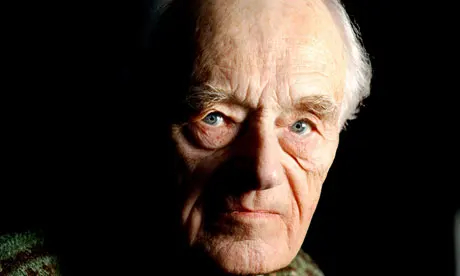POULSSON, Jens-Anton (#164)

#164
Colonel Jens-Anton POULSSON
Norwegian War Cross with Sword, DSO, St Olav’s Medal, Légion d’Honneur, Croix de Guerre, US Medal of Freedom
27 October 1918 - 2 February 2010
Alan Pollock’s Rough Notes:
A work in progress – the fuller biographies will emerge in due course: please sign up to the Newsletter (bottom of the page) and we’ll let you know when we’ve done more justice in writing up our extraordinary signatories.
Norwegian military and then resistance. OC advance party to recce then join Joachim Rønneberg DSO’s daring Vemork Heavy Water Raid, delaying German atomic weapons.
‘Colonel Jens Anton Poulsson was commander of the external and early inserted advanced party which would reconnaissance ahead of and be Joachim Ronneberg’s internal Demolition party for the Vemork Heavy Water Raid, considered so vital in preventing atomic weapon progress of the German scientific team. Jens and his tiny team’s survival, so isolated through months of winter and near starvation, was an epic story in itself with only nine Norwegian Commandos, having to undertake successfully the Ryggan raid, after the tragic loss of two towed gliders and 37 British Commandos.’ [ARP]
In addition to the well-known 1966 film ‘The Heroes of Telemark’ about the raids, a more recent Norwegian documentary mini-series with dramatize episodes, ‘The Heavy Water War’ was released as The Saboteurs in the UK, several episodes of which can be found here.
Obituary courtesy of The Guardian.
 The military career of the Norwegian Jens-Anton Poulsson, who has died aged 91, lasted 42 years, but may fairly be said to have peaked near the beginning, when he led the home-based support for the most spectacular sabotage operation of the second world war – the destruction of the heavy-water plant in the Telemark region west of Oslo.
The military career of the Norwegian Jens-Anton Poulsson, who has died aged 91, lasted 42 years, but may fairly be said to have peaked near the beginning, when he led the home-based support for the most spectacular sabotage operation of the second world war – the destruction of the heavy-water plant in the Telemark region west of Oslo.
Poulsson, born at Tinn in Telemark, had just joined the army at the time and fled to Britain after the debacle that followed the German invasion in 1940. This culminated in a chaotic allied withdrawal and the ensuing Nazi occupation. In the UK, Poulsson joined the first Norwegian Independent Company as a second lieutenant. He was soon recruited by the Special Operations Executive (SOE), created in summer 1940 by Winston Churchill for sabotage operations in occupied territory.
The Norwegian resistance reported in autumn 1941 that the hydroelectric power-plant at Vermork had stepped up production of heavy water, raising fears that the Germans were accelerating their efforts to develop an atomic bomb. The fluid is used as a moderator to slow down the chain reaction in unenriched uranium 235. The plant, opened before the war as one of the largest of its kind in the world, had been set up to power a fertiliser factory, for which large quantities of hydrogen were needed. A by-product of hydrogen production was deuterium, the hydrogen isotope found in heavy water, which is produced slowly and expensively by electrolysis.
The US and Britain, already committed to a programme to create an atomic bomb, concluded that if the Nazis needed large quantities of heavy water, they had to be working on a bomb, just as the exiled Albert Einstein had twice warned. In fact, Albert Speer, Hitler’s armaments supremo, was more interested in the other main nuclear application, energy, of which Germany was always short.
As Hitler had barred any research programme that would not produce results within a year, the German budget for nuclear research was very modest. The SOE’s most dramatic coup was therefore based on a miscalculation and was irrelevant to the strategic course of the war.
In October 1942, in Operation Grouse, Poulsson and his SOE team of three Norwegian NCOs were dropped by parachute at night on the Hardangervidda plateau, within reach of the plant on skis. Their mission was to prepare for a landing by two gliders, each carrying a nine-man sabotage squad. They were to provide a homing beam for the bombers towing the gliders.
Operation Freshman was launched early in November, but unusually cold weather caused ice to build up on the wings of the gliders, which crashed into mountains. One team was wiped out, while the second nine survived, only to be captured and shot.
Poulsson and his men retreated up the mountains to a trapper’s hut. After three months, they were alerted by wireless that a second attempt, Operation Gunnerside, was due. Lieutenant Joachim Rønneberg led a team of five who arrived by parachute one night in mid-February 1943.
Rønneberg and Poulsson joined forces three days later and attacked the plant. The textbook assault achieved decisive damage with timebombs, allowing the entire force to withdraw first without a scratch. Three men stayed behind to train the local resistance, while the rest of Rønneberg’s men crossed into neutral Sweden and Poulsson got to Scotland by sea.
Both lieutenants received the DSO as well as Norwegian decorations. Even General Nikolaus von Falkenhorst, the German commander-in-chief in Norway, expressed his admiration, and ordered the release of civilian hostages rounded up for reprisals.
Poulsson returned to Norway by parachute in 1944 to help organise more resistance groups, taking over command when Major Leif Tronstad was killed. He stayed on in the army after the war, serving with Scandinavian UN peacekeeping units in Gaza and elsewhere. He commanded the royal guard for four years in the 1960s, was second-in-command of the brigade stationed on the border with Russia at the height of the cold war, and commanded an infantry regiment as a colonel until his retirement in 1982.
His wife, Bergljot, and their two daughters survive him.



